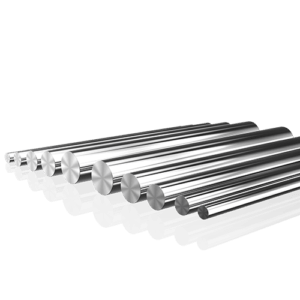Welcome to My Blog!
Before we dive into the content, I’d love for you to join me on my social media platforms where I share more insights, engage with the community, and post updates. Here’s how you can connect with me:
Facebook:https://www.facebook.com/profile.php?id=100090063158454
Now, let’s get started on our journey together. I hope you find the content here insightful, engaging, and valuable.
Table of Contents
Introduction

Stainless steel, an alloy celebrated for its exceptional corrosion resistance, strength, and durability, has become an indispensable material in countless industries. From the bustling kitchens of restaurants to the harsh marine environments, stainless steel’s adaptability is undeniable. However, with a myriad of types of stainless steel available, selecting the optimal type for a specific application can be a complex task. This comprehensive guide aims to unravel the intricacies of stainless steel, shedding light on its various types, their unique properties, and their best-suited applications.
The Science Behind Stainless Steel
At the heart of stainless steel’s remarkable properties lies its composition. Primarily an alloy of iron and chromium, stainless steel owes its corrosion resistance to the formation of a protective chromium oxide layer on its surface. This passive film acts as a barrier, shielding the underlying metal from corrosive agents. The addition of other elements, such as nickel, molybdenum, and manganese, further enhances the steel’s properties, tailoring it to specific applications.
Common Types of Stainless Steel


- Austenitic Stainless Steel Renowned for their non-magnetic properties and excellent formability, austenitic stainless steels are the most widely used type of stainless steel. Key grades include:
- Type 304: A versatile general-purpose type of stainless steel, Type 304 offers good corrosion resistance and is extensively used in food processing, architectural cladding, and automotive applications.
- Type 316: With the addition of molybdenum, Type 316 exhibits superior resistance to pitting and crevice corrosion, making it ideal for marine environments, chemical processing, and medical equipment.
- Ferritic Stainless Steel Ferritic stainless steels, characterized by their magnetic properties and lower carbon content, offer good corrosion resistance and formability. Common grades include:
- Type 430: A cost-effective type of stainless steel, Type 430 is frequently used in automotive trim, kitchen equipment, and architectural applications.
- Martensitic Stainless Steel Martensitic stainless steels are magnetic and can be hardened through heat treatment. Their high strength and wear resistance make them suitable for cutlery, surgical instruments, and other high-stress applications.
- Duplex Stainless Steel Combining the best of both worlds, duplex stainless steels offer a unique blend of properties. They exhibit excellent corrosion resistance, high strength, and good weldability, making them ideal for demanding environments such as offshore oil and gas platforms and chemical processing plants.
Factors to Consider When Selecting the Right Type of Stainless Steel
When selecting the right type of stainless steel, several critical factors must be carefully considered:
- Corrosion Resistance: The specific corrosive environment will dictate the required level of corrosion resistance. For example, marine applications demand high chloride resistance, while food processing requires resistance to acids and alkalis.
- Strength: The application’s mechanical requirements, such as load-bearing capacity and impact resistance, will influence the necessary strength.
- Formability: The ease of forming or fabricating the type of stainless steel into desired shapes is essential for various applications, from automotive components to architectural structures.
- Weldability: If welding is involved, the weldability of the chosen type of stainless steel must be considered to ensure the integrity of the final product.
- Cost: The cost of the type of stainless steel varies significantly depending on the grade and its availability.
Comparison of Common Stainless Steel Grades

| Grade | Chromium Content (%) | Nickel Content (%) | Molybdenum Content (%) | Key Characteristics | Typical Applications |
|---|---|---|---|---|---|
| 304 | 18-20 | 8-10 | – | Good corrosion resistance, formability | Food processing, automotive, architectural cladding |
| 316 | 16-18 | 10-14 | 2-3 | Excellent corrosion resistance, especially in chloride environments | Marine environments, chemical processing, medical equipment |
| 430 | 16-18 | 0-2 | – | Magnetic, good corrosion resistance, formability | Automotive trim, kitchen equipment, architectural applications |
| 410 | 11-13 | 0-2 | – | Magnetic, hardenable, good corrosion resistance | Cutlery, surgical instruments |
| Duplex | 22-26 | 4-8 | 3-4 | Excellent corrosion resistance, high strength, good weldability | Offshore oil and gas, chemical processing |
Conclusion
Selecting the appropriate type of stainless steel is a crucial decision that can significantly impact the performance, durability, and cost-effectiveness of a product or structure. By understanding the diverse range of types of stainless steel, their unique properties, and the factors influencing the choice, engineers, designers, and manufacturers can make informed decisions to ensure optimal results.
FAQ
What is the difference between stainless steel and carbon steel?
Stainless steel contains chromium, which forms a protective oxide layer that prevents rust. Carbon steel lacks this protective layer and is more susceptible to corrosion.
How is stainless steel produced?
Stainless steel is produced through a complex process involving melting iron and adding specific amounts of chromium, nickel, and other elements. The molten metal is then cast into ingots, which are further processed into various shapes and sizes.
Can stainless steel rust?
While stainless steel is highly resistant to corrosion, it can still rust under certain conditions, such as exposure to highly corrosive environments or damage to the protective oxide layer.
What is the best type of stainless steel for outdoor use?
For outdoor applications, Type 316L stainless steel is often recommended due to its superior resistance to corrosion, particularly in marine environments.
How do I identify a type of stainless steel?
One common method to identify a type of stainless steel is through a spark test. The shape, color, and sound of the sparks produced when grinding the steel can provide clues about its composition. Additionally, chemical analysis or a magnetic test can be used for more accurate identification.
